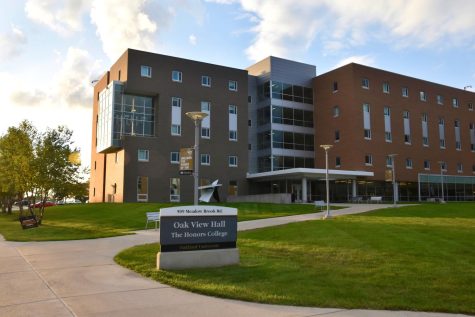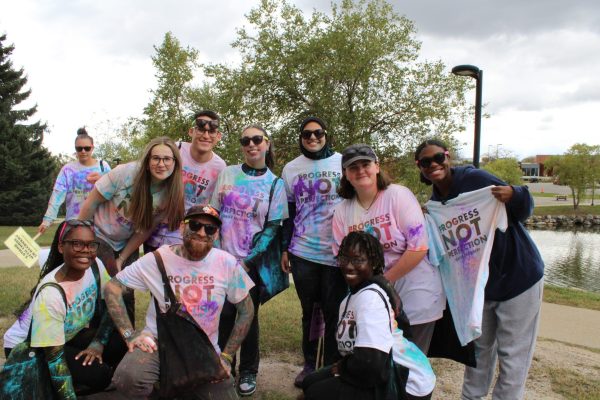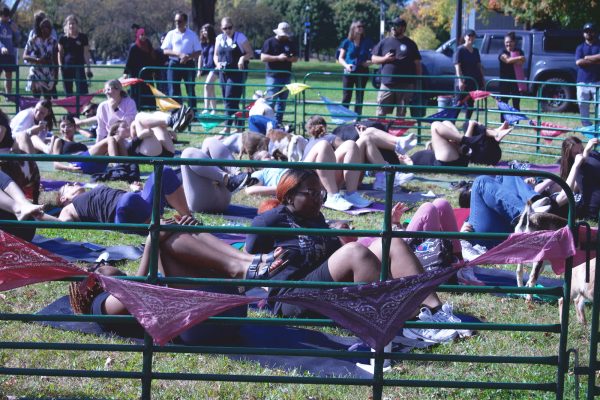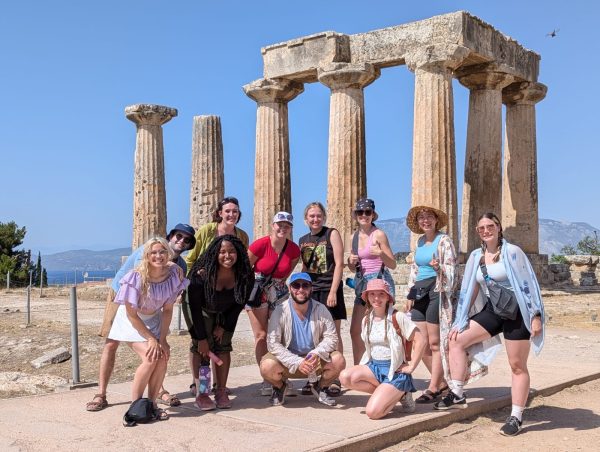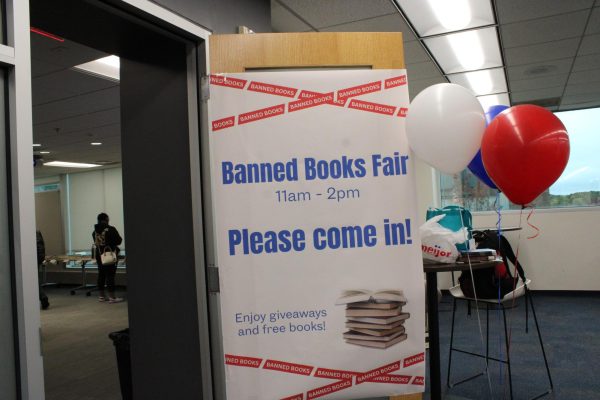Rituals, Rallies, and the Creation of Sacred Space in Nazi Germany
On Jan. 12, “History Comes Alive” was held by Oakland University’s Department of History in the Gold Rooms at 7pm. Associate Professor Derek Hastings gave an informative lecture on “Rituals, Rallies, and the Creation of Sacred Space in Nazi Germany.
Derek Hastings, a professor in the history department, presented at the ‘History Comes Alive’ lecture series on Jan. 12.
According to Todd Estes, the chair of the history department, the program is in its 12th year. This year, Estes was excited to see a full crowd despite unpredicted obstacles in the way of the event such as the inclement weather and the State of the Union address being held the same night.
“But we ordered so many cookies, please take one as a door prize,” he told the audience with a smile.
Following Estes’ introduction, Hastings came up and began his presentation on Nazi Germany.
His presentation, entitled “Rituals, Rallies and the Creation of Sacred Space in Nazi Germany,” was about the Nazi rise to power. According to Hastings, the program also covered how they built a movement that was “more than political.”
Hastings said that the idea of “sacred space” has not been talked about much by historians as the study of these topics is fairly new.
The idea of “sacred space” was described in the lecture as a place that the Nazis set up to become a religious place of worship.
According to the lecture, religion was not even part of Nazi tactic. Hastings said that although Nazi ideology was originally heavily based in Catholicism, it was all but eliminated following the Beer Hall Putsch. This was an incident where Hitler and the Nazis worked to try and overthrow the government and wound up in jail.
The Nazis set up places to turn the victims of the Beer Hall Putsch into martyrs. By the end of the Second World War, any passing citizen had to stop and salute these memorials.
Today these statues remain in Germany.
The ‘History Comes Alive’ series is held multiple times per semester and every lecturer is a professor in the area in which they present. This presentation in particular filled half of the Gold Rooms.
Past lectures have included Erin Dwyer’s talk on conspiracy theories and Ian Greenspan’s lecture on racism and the Turner Diaries.
“Students can interact with alumni and see how they still continue to interact with the campus,” Hastings said of the series.
These lectures, in Hastings’ eyes, are also a way for students to engage with their professors outside of the classroom setting.
“It’s a way to see professors in a different light,” he said.
More information about the upcoming ‘History Comes Alive’ lectures can be found at www.oakland.edu/history.




